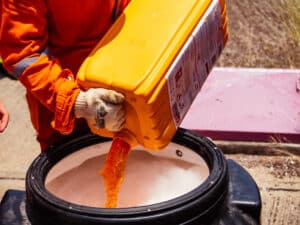Proposal
Problem:
Wildfires, a natural phenomenon that is becoming increasingly frequent and intense, pose significant threats to human lives, property, and natural ecosystems. These uncontrolled blazes are typically ignited by dry conditions, high winds, and flammable vegetation, resulting in rapid spread that makes them extremely difficult to control and extinguish.
Geographically, regions prone to wildfires are vast and diverse, including parts of North America, Australia, Europe, Asia, and Africa. These areas are commonly characterized by dry climates, dense vegetation, and an increasing trend of human development near forests or grasslands. The intersection of these factors creates a perfect storm for wildfires to ignite and spread.
The impact of wildfires is widespread and profound. On the frontlines, firefighters and emergency responders face direct health and safety risks as they battle these ferocious blazes. However, the effects are not limited to those in the immediate path of the fire. Residents residing in fire-prone areas are at risk of losing their homes and livelihoods, an experience that can be both financially and emotionally devastating. Moreover, wildfires can severely affect wildlife habitats, leading to loss of biodiversity. They can also compromise air quality, creating health risks for people living far from the actual fire, and contaminate water sources, impacting the supply of one of life’s most essential resources.
The global rise in the frequency, intensity, and duration of wildfires underscores the severity of the problem. These fires result in significant economic losses, environmental damage, and human casualties, making them one of the most critical environmental issues we face today. Climate change further exacerbates the issue by fostering conditions that intensify wildfires, such as higher temperatures and prolonged droughts.
Given this grim reality, the need for urgent action to combat wildfires and enhance firefighter safety has never been more apparent. Proactive measures are required to reduce risks, improve firefighting capabilities, and protect vulnerable communities and ecosystems. These proactive measures could include investing in innovative technologies, such as Fire Terminator.
Addressing the wildfire crisis also calls for a collaborative effort. Governments, businesses, communities, and individuals must all play a role in mitigating risks and improving response strategies. As we collectively confront this pressing issue, we must remember that our actions today will shape the safety and health of our planet and future generations.
Solution:
- Rapid Fire Suppression: Fire Terminator’s herbal liquid with the same density as water and its unique mechanism for extinguishing fires could enable rapid suppression of wildfires. By effectively turning off the fire instantly and preventing any chance of re-ignition, Fire Terminator can help contain wildfires before they spread further.
- Enhanced Firefighter Safety: The use of Fire Terminator could significantly enhance firefighter safety by reducing their exposure to the dangers of battling intense and unpredictable wildfires. With its ability to quickly extinguish fires and prevent re-ignition, firefighters can operate more safely and efficiently in fire suppression efforts.
- Preventing Property Damage and Loss: By swiftly extinguishing wildfires, Fire Terminator can help prevent or minimize property damage and loss for residents living in fire-prone areas. This could include homes, businesses, infrastructure, and natural resources, thereby safeguarding livelihoods and communities.
- Protecting Ecosystems: Wildfires often have devastating effects on ecosystems, including the destruction of habitats, loss of biodiversity, and soil erosion. Fire Terminator’s ability to rapidly suppress fires can help protect ecosystems from the severe impacts of wildfires, promoting ecological resilience and recovery.
- Mitigating Environmental Impacts: Wildfires contribute to air pollution, release greenhouse gases, and degrade water quality, posing significant environmental risks. By preventing wildfires or reducing their severity, Fire Terminator can help mitigate these environmental impacts, promoting cleaner air and water for surrounding communities.
- Increasing Firefighting Efficiency: Fire Terminator’s innovative technology could improve overall firefighting efficiency by streamlining fire suppression efforts and reducing the resources required to contain wildfires. This could lead to cost savings for firefighting agencies and better allocation of resources during wildfire emergencies.
In short, Fire Terminator is a complete solution to wildfire problems. It focuses on stopping fires quickly, keeping firefighters safe, protecting property and nature, and helping the environment. Using Fire Terminator in firefighting strategies could greatly improve how we deal with wildfires.
SDG’s:
- Goal 11: Sustainable Cities and Communities: Fire Terminator helps keep communities safe from wildfires. It reduces damage to homes and jobs and prevents people from having to move. It helps make both cities and villages safer.
- Goal 13: Climate Action: Wildfires make climate change worse by releasing harmful gases and destroying trees that absorb carbon. Fire Terminator controls wildfires quickly, which cuts down their harm to our climate.
- Goal 15: Life on Land: Wildfires can ruin forests, grasslands, and places where animals live. Fire Terminator fights wildfires more effectively, which helps protect our environment and restore damaged lands.
- Goal 3: Good Health and Well-being: Wildfires can cause health problems like breathing issues and stress. They are also being fought with chemicals, which are toxic for their users. Fire Terminator helps reduce the number and severity of wildfires, which helps keep people and firefighters healthier with its organic solution.
- Goal 17: Partnerships for the Goals: Tackling wildfires needs teamwork from governments, fire agencies, research groups, and communities. Fire Terminator promotes teamwork by offering a tool for everyone to use in fighting wildfires.
To sum up, Fire Terminator supports the United Nations’ Sustainable Development Goals by tackling wildfires. It helps combat climate change, protect ecosystems, improve public health, encourage innovation, and foster collaboration. By doing so, it plays a key part in building a sustainable and resilient future.


